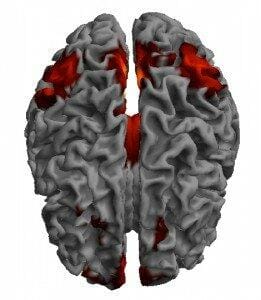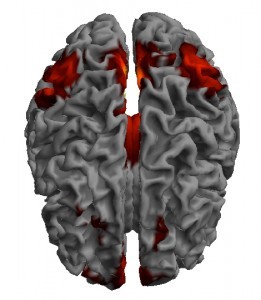Brain MRI Reveals a Potential Biomarker for Depression

A team of scientists from Columbia University Medical Center (CUMC) and New York State Psychiatric Institute (NYSPI) have recently published a study that correlates depression risk with a higher connectivity between brain areas that conform the default mode network (DMN). The article can be found online in the website version of Nature’s Neuropsychopharmacology.
The DMN is a network of brain regions that have a highly correlated activity. The DMN activates by default when someone is not involved in a task or paying attention to the external world, but rather concentrating on internal thinking: about others, themselves, the past and the future. An important part of this internal thinking consists of ruminative thoughts, those that focus on one’s symptoms of distress and their causes and consequences instead of on solutions, which has been associated to anxiety and other mood disorders. The connection between increased DMN activity and Major Depressive Disorder (MDD) had been described previously, without defining the original trigger.
A potential biomarker for the risk of developing depression
The researchers at CUMC used Magnetic Resonance Imaging (MRI) to map the brains of people at high risk of developing MDD and compare them with those of people at low risk. The high risk group was determined by their family history but had not developed MDD, as depression would change brain structures and invalidate the study. The researchers demonstrated that people at high risk of MDD had stronger DMN connections.
The new study clarifies that DMN increase in activity can occur before depression. This means that the increase in DMN connectivity is a cause of MDD, and not a consequence, although they probably constitute a feedback loop.
Identification of the DMN activity patterns by MRI could be used as a biomarker to identify people with higher risk of developing MDD. This could lead to preventive actions and intervention in the form of cognitive behavioral therapy.
Source: CUMC

